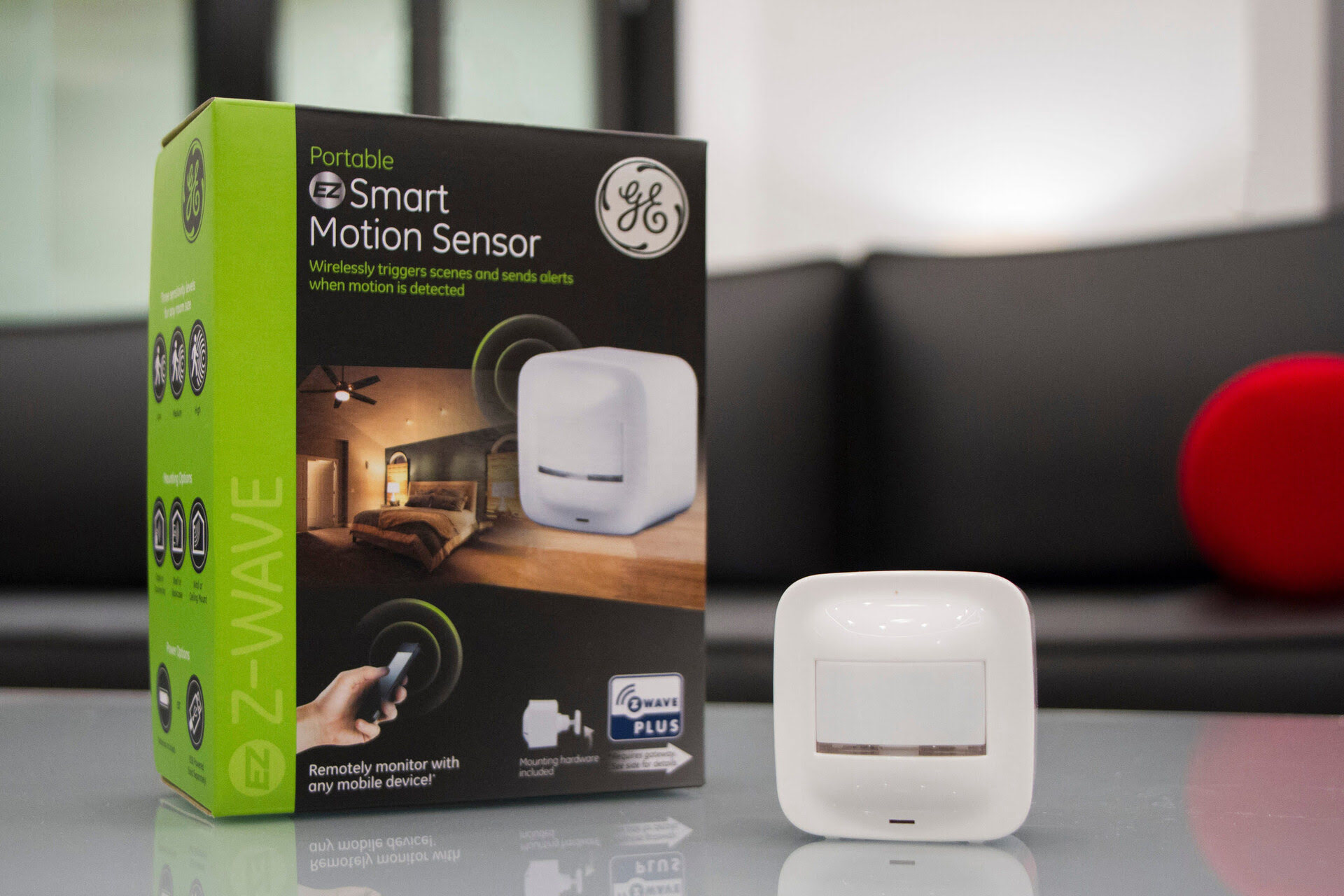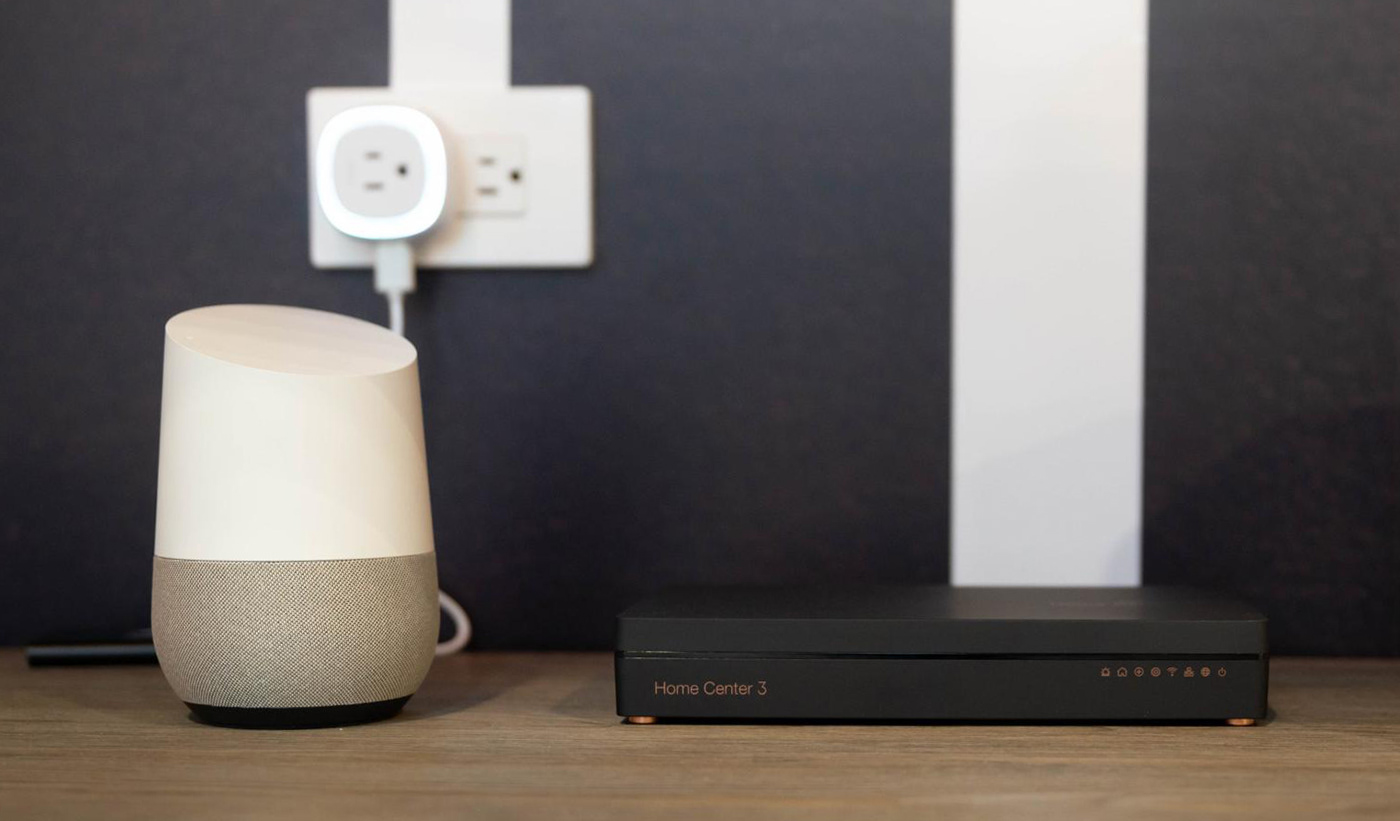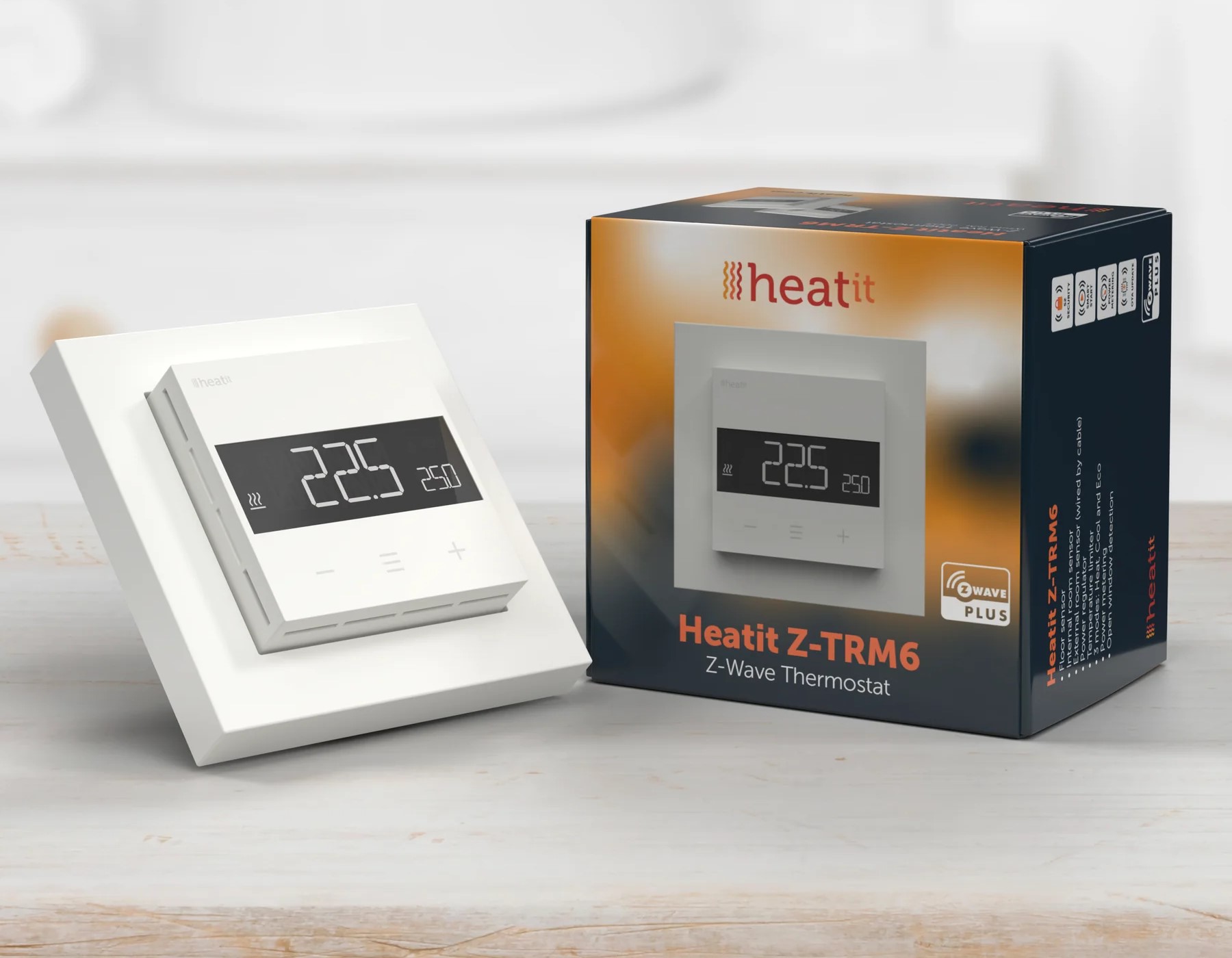Home>Home Security and Surveillance>Why Is Z-Wave Motion Detector Triggering All Lights?


Home Security and Surveillance
Why Is Z-Wave Motion Detector Triggering All Lights?
Modified: November 1, 2024
Discover why your Z-Wave motion detector is triggering all the lights in your home. Learn how to troubleshoot and resolve this issue with our home security and surveillance expertise.
(Many of the links in this article redirect to a specific reviewed product. Your purchase of these products through affiliate links helps to generate commission for Storables.com, at no extra cost. Learn more)
Introduction
Welcome to the world of home security and surveillance! In today’s modern era, protecting our homes and loved ones has become a top priority. With advancements in technology, we have access to various home security systems that offer peace of mind and enhanced protection.
One such technology is Z-Wave motion detectors. These innovative devices utilize motion-sensing technology to detect movement and trigger corresponding actions. While Z-Wave motion detectors are designed to enhance home security, it can be frustrating when they trigger all the lights in your home, creating inconvenience and confusion.
In this article, we will delve into the world of Z-Wave motion detectors and explore the common issues and possible causes for motion detectors triggering all lights. We will also provide troubleshooting steps to help you resolve this issue and restore the functionality of your motion detectors to their intended use.
So, if you’re facing the perplexing problem of Z-Wave motion detectors triggering all the lights in your home, keep reading to gain insights on how to overcome this issue and maintain a secure environment.
Key Takeaways:
- Troubleshoot Z-Wave motion detectors triggering all lights by checking device associations, adjusting sensitivity settings, and eliminating signal interference for a secure and efficient home security system.
- Understand Z-Wave motion detectors’ common issues and possible causes for triggering all lights. Follow troubleshooting steps and stay proactive in maintaining a properly functioning smart home security system.
Read more: Why Is My Motion Detector Triggering Alarms
Understanding Z-Wave Motion Detectors
Before we delve into the possible causes for Z-Wave motion detectors triggering all lights, let’s first gain a deeper understanding of how these devices work.
Z-Wave motion detectors are an integral part of a smart home security system. They are designed to detect movement within their designated range and trigger specific actions in response. These actions can include turning on lights, activating alarms, or sending notifications to your smartphone or security system.
Unlike traditional motion detectors that operate on a standalone basis, Z-Wave motion detectors are part of a larger network of interconnected devices. This network, known as a Z-Wave mesh network, enables seamless communication between devices and allows for automated control over various aspects of your home security system.
Z-Wave motion detectors typically consist of a sensor that detects motion and a Z-Wave radio that communicates with other devices in the network. They use radio frequency signals to transmit data to a Z-Wave hub or controller, which then triggers the desired actions.
These motion detectors are not limited to indoor use only. There are also outdoor Z-Wave motion detectors available, designed specifically to monitor the exterior of your property and provide an extra layer of security.
With their advanced technology and integration capabilities, Z-Wave motion detectors offer a range of benefits:
- Enhanced Security: By detecting and alerting you to any motion in your home, Z-Wave motion detectors play a crucial role in enhancing the overall security of your property.
- Convenience: With the ability to automate actions based on motion detection, Z-Wave motion detectors provide convenience by turning on lights when you enter a room or triggering other desired actions without manual intervention.
- Energy Efficiency: By automatically controlling lights and other devices, Z-Wave motion detectors help save energy by ensuring that lights are only turned on when necessary.
- Integration with Other Devices: Z-Wave motion detectors can integrate with other smart devices in your home security system, such as cameras, door locks, and alarms, providing a comprehensive and interconnected security solution.
Now that we have a basic understanding of Z-Wave motion detectors, let’s explore some common issues that may arise with these devices and delve into the possible causes for motion detectors triggering all lights.
Common Issues with Z-Wave Motion Detectors
While Z-Wave motion detectors are designed to enhance home security and provide convenience, there are some common issues that users may encounter. Understanding these issues can help in troubleshooting and resolving problems effectively.
Let’s take a look at some of the common issues that may arise with Z-Wave motion detectors:
- False Alarms: One of the primary issues with motion detectors is the occurrence of false alarms. This happens when the motion detector detects movement that is not actually present, such as the movement of curtains or tree branches outside the sensor’s range.
- Poor Range: Z-Wave motion detectors rely on radio frequency signals to communicate with other devices in the network. However, if the signal range is weak or obstructed, it can lead to connectivity issues and inconsistent performance.
- Interference: Z-Wave motion detectors can be susceptible to interference from other wireless devices or even neighboring networks. This interference can disrupt the communication between the motion detector and the other devices in the network, leading to malfunction or false triggers.
- Compatibility Issues: Sometimes, compatibility issues can arise when integrating Z-Wave motion detectors with other devices or hubs that use different communication protocols. This can result in limited functionality or the inability to control the motion detector effectively.
- Improper Placement: Incorrect placement of the motion detector can also lead to issues. Placing it in areas where there are obstructions, such as furniture or curtains, can limit its effectiveness in detecting motion accurately.
Now that we have explored the common issues, let’s investigate the possible causes for Z-Wave motion detectors triggering all lights and provide troubleshooting steps to resolve this issue.
Check the motion detector’s sensitivity settings. Lower sensitivity can prevent false triggers. Also, ensure the detector is positioned away from direct sunlight or heat sources.
Possible Causes for Motion Detector Triggering All Lights
If your Z-Wave motion detector is triggering all the lights in your home instead of just the intended ones, it can be quite perplexing. There are several possible causes for this issue, and understanding them can help in troubleshooting and resolving the problem.
Here are some possible causes for Z-Wave motion detectors triggering all lights:
- Incorrect Device Association: Z-Wave motion detectors can be associated with multiple devices in the network for different actions. If the association is not set correctly, it can result in all lights being triggered instead of the intended ones. Check the device association settings in your Z-Wave hub or controller and ensure that the motion detector is associated with the desired lights only.
- Misconfigured Automation Rules: Many Z-Wave hubs or controllers allow you to set up automation rules based on motion detection. If these rules are misconfigured or overlapping, it can cause all lights to be triggered instead of the specific ones you intended. Review and adjust your automation rules to ensure they are properly configured.
- Sensitivity Settings: Motion detectors typically have sensitivity settings that determine how easily they trigger actions. If the sensitivity level is set too high, even slight movement can trigger all lights. Adjust the sensitivity settings of your motion detector to an appropriate level based on the specific requirements of your home.
- Signal Interference: As mentioned earlier, signal interference can cause communication issues between the Z-Wave motion detector and other devices in the network. This interference can result in improper signaling to all lights instead of the intended ones. Make sure that there are no other wireless devices or networks causing interference and try repositioning the motion detector for better signal reception.
- Faulty Hardware: In some cases, the issue may lie with the motion detector itself. Check for any physical damage or malfunctioning components. If you suspect a hardware issue, contact the manufacturer or consider replacing the motion detector.
By understanding these possible causes, you can now proceed with troubleshooting steps to resolve the issue of Z-Wave motion detectors triggering all lights. Let’s explore these steps in the next section.
Troubleshooting Steps to Resolve Motion Detector Triggering All Lights
Resolving the issue of Z-Wave motion detectors triggering all lights requires a systematic approach to troubleshooting. By following these steps, you can identify and resolve the root cause effectively:
- Check Device Associations: Verify the device associations in your Z-Wave hub or controller. Ensure that the motion detector is associated with the correct lights and that there are no conflicting associations causing all lights to trigger. Make any necessary adjustments to the device associations.
- Review Automation Rules: Review the automation rules set up in your Z-Wave hub or controller. Check for any misconfigured or overlapping rules that may cause all lights to trigger. Adjust the automation rules to ensure that they are properly configured and do not conflict with each other.
- Adjust Sensitivity Settings: Experiment with the sensitivity settings of your motion detector. Gradually adjust the sensitivity level until you find the optimal setting that accurately detects motion without triggering all lights. Keep in mind that different environments may require different sensitivity levels.
- Eliminate Signal Interference: Identify and eliminate any potential sources of signal interference. Check for nearby wireless devices or networks that may be causing interference. Reposition the motion detector to minimize signal obstruction and optimize communication with other devices in the network.
- Reset and Re-Include: If all else fails, you can try resetting the Z-Wave motion detector and re-including it in your network. Consult the device’s manual for instructions on how to perform a reset and re-include process. This can often resolve any configuration or communication issues.
- Contact Manufacturer Support: If the problem persists after attempting the troubleshooting steps, it may be necessary to contact the manufacturer’s support team. They can provide additional guidance or recommend further troubleshooting steps specific to your motion detector model.
By following these troubleshooting steps, you should be able to identify and resolve the issue of Z-Wave motion detectors triggering all lights. Remember to document any changes made during the troubleshooting process for future reference and to ensure consistency in your home security system.
Now that you are equipped with troubleshooting knowledge, let’s conclude our discussion.
Conclusion
Z-Wave motion detectors are a valuable component of a smart home security system, providing enhanced security and convenience. However, issues can arise, such as the motion detector triggering all lights instead of just the intended ones. Understanding the common issues and possible causes of this problem is essential in troubleshooting and resolving the issue effectively.
In this article, we explored the common issues with Z-Wave motion detectors, including false alarms, poor range, interference, compatibility issues, and improper placement. We also discussed the possible causes for motion detectors triggering all lights, such as incorrect device association, misconfigured automation rules, sensitivity settings, signal interference, and faulty hardware.
To troubleshoot and resolve this issue, we provided a series of steps that include checking device associations, reviewing automation rules, adjusting sensitivity settings, eliminating signal interference, resetting and re-including the motion detector, and contacting the manufacturer’s support if needed.
By following these troubleshooting steps, you should be able to identify and address the root cause of the problem, restoring the functionality of your Z-Wave motion detector and ensuring that only the intended lights are triggered when motion is detected.
Remember, maintaining a secure and efficient home security system requires regular maintenance and troubleshooting. Stay proactive in monitoring and addressing any issues that may arise, and always refer to the manufacturer’s instructions and support when needed.
We hope this article has provided you with valuable insights and guidance on resolving the issue of Z-Wave motion detectors triggering all lights. Enjoy the peace of mind and convenience that a properly functioning smart home security system can bring!
Frequently Asked Questions about Why Is Z-Wave Motion Detector Triggering All Lights?
Was this page helpful?
At Storables.com, we guarantee accurate and reliable information. Our content, validated by Expert Board Contributors, is crafted following stringent Editorial Policies. We're committed to providing you with well-researched, expert-backed insights for all your informational needs.














